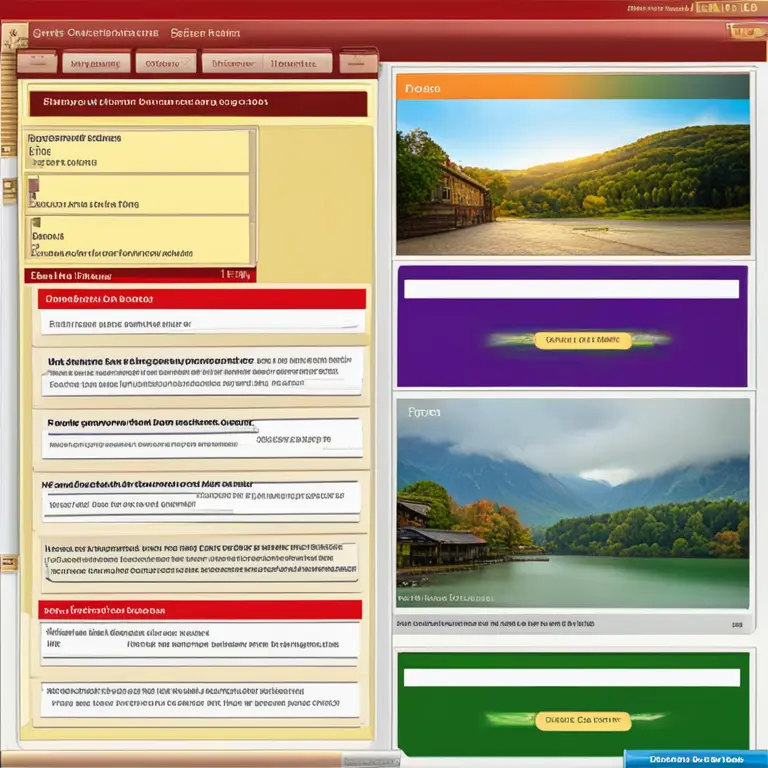
Beginner's Guide to Meditation Breathing Techniques
Discover simple and effective meditation breathing techniques to foster relaxation and clarity for beginners' practice.
article by Hina Kurosawa
Introduction to Meditation Breathing
Breathing is an intrinsic part of meditation and mindfulness. For those new to the practice, understanding the basics of breath control can greatly enhance the meditative experience. This guide outlines several beginner-friendly techniques designed to promote a tranquil mind and a harmonious body. Learning to harness the breath is a powerful step towards achieving inner peace and self-awareness, key components of any meditation practice. Whether you're looking to de-stress, improve concentration, or simply find a moment of calm, these techniques are your starting point.

Breath Awareness Technique
The foundation of all meditation breathing exercises is simple breath awareness. Find a comfortable seated position and close your eyes. Begin by taking a few natural breaths and then gradually move your attention to the rhythm of your inhalations and exhalations. Notice the temperature of the air as it enters and leaves your nostrils. Observe the rise and fall of your chest and belly. If your mind wanders, gently return your focus to your breath. This practice sets the stage for a deeper meditation experience and fosters an immediate sense of presence.

Diaphragmatic Breathing
Diaphragmatic breathing, or belly breathing, promotes full oxygen exchange and is particularly efficient in reducing stress. To perform this technique, place one hand on your chest and the other on your abdomen. Take a slow breath in through the nose, ensuring that the diaphragm inflates with enough air to stretch the lungs. The hand on your belly should rise higher than the one on your chest, indicating proper diaphragmatic breathing. Exhale slowly and repeat the process for several minutes to stimulate a relaxation response throughout your body.

4-7-8 Breathing Exercise
The 4-7-8 exercise, also known as the "relaxing breath," involves breathing in for 4 seconds, holding the breath for 7 seconds, and exhaling for 8 seconds. This technique helps reduce anxiety and aids in sleep. It is important to sit with your back straight while practicing the 4-7-8 method. If you find the timing challenging, start with smaller intervals and work your way up. This not only calms the nervous system but also helps in cultivating patience and focus within your meditation practice.

Alternate Nostril Breathing
Nadi Shodhana, or alternate nostril breathing, is a traditional practice that balances the body and clears the mind. Begin by placing your right thumb over your right nostril and inhale deeply through the left nostril. At the peak of your inhalation, close off the left nostril with your ring finger, then exhale through the right nostril. Continue this pattern, inhaling through the right nostril and switching before exhalation. It’s an excellent technique for reducing stress and harmonizing the two hemispheres of the brain.
Guided Visualization Breathing
For those who are visually inclined, guided visualization can augment the meditative breathing process. Inhale deeply while picturing a serene environment; it could be a quiet beach, a starry night, or a lush forest. As you exhale, imagine releasing any tensions or worries into this space. This practice not only enhances focus during meditation but also encourages creative imagery which can lead to a deeper sense of relaxation and contentment.
Consistency is Key
Remember, the journey of mastering breathing techniques takes practice and consistency. For beginners, it's recommended to practice daily, even if it's just for a few minutes. As you grow more comfortable with the exercises, you can gradually increase the duration of your sessions. Regular practice will lead to improvements in your overall meditation experience and in your everyday stress levels. Be patient and kind to yourself as you embark on this transformative path.
Published: 2/12/2024
Modified: 2/12/2024
More predictions
Come back here soon to learn more about yourself and your future


The Spectrum of Meditation Practices
Delve into the diverse world of meditation techniques to enhance mindfulness, focus, and tranquility in your daily life.


Diverse Meditation Techniques for Inner Tranquility
Explore a concise guide to diverse meditation techniques designed for fostering inner peace and mindfulness in the modern world.


Various Meditation Practices for Inner Peace
Discover different meditation techniques designed to promote tranquility, mental clarity, and spiritual growth in our comprehensive guide.